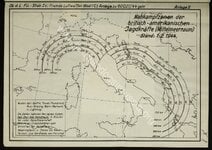Shortround6
Lieutenant General
There was some discussion of putting a 2 stage Merlin in the P-40 in Dec 1941 and early 1942. Both LTC Bogart, chief of the technical staff section at Wright Field and LTC Carroll, chief of experimental engineering section at Wright Field were on record in writing as of Jan 19, 1942 as being against it.The timing, however, I believe my recollection is more or less correct, as he discussed the Battle of Britain as interfering with his ambitions--whether that's a self-serving hindsight, a faulty recollection or something else...I leave up to individual interpretation.
This is 1 1/2 years (almost) after the BoB so it is a little hard to blame the BoB. That is assuming that the Merlin 61 was actually hardware in Aug/Sept 1940. Spits were getting Merlin XIIs and Hurricanes started getting Merlin XXs by Sept 1940. first flight of a Wellington VI with Merlin 60 engine was in Oct 1941 (?).
June 30th 1941 saw the first flight of the XP-40F (modified P-40D airframe) with a Merlin 2 speed engine. Deliveries of the P-40F started Jan 3rd 1942.
I think somebody many have confused 2 speed and 2 stage.
The P-40 always seemed to be 1-2 years behind in the state of it's engines. A P-40 in the summer/fall of 1940 had an engine almost as good as Spitfire I had in the spring of 1939.
The P-40E in the summer of 1941 had an engine that was not quite as good as the Merlin XII in the MK II Spit in Aug/Sept 1940.
Unfortunately the Allison got kind of stuck and the late model Allisons in the P-40M and N were nowhere close to the Merlin 45 engines in Spitfire Vs of early 1941.
The P-40F & Ls got the equivalent of the Merlin XX used in the Hurricane of late of 1940.
Both engines crossed over a bit with emergency power or WEP.
The P-40 suffered due to weight for the installed power. It is seldom given credit for it's streamlining. Perhaps because it is compared to the P-39 (a smaller airplane) and the P-51 which was a generation later than just about anything else that flew in WW II.
The P-40 was very, very good at the speed it archived for the power it had given how much it weighed. It just wasn't as good as the P-51.
The P-40s did a lot of good work in NA and Italy. In part because they were given top cover by Spitfires and P-38s, pretty much starting around the time of Operation Torch.
P-40s had done a lot during much of 1942.

